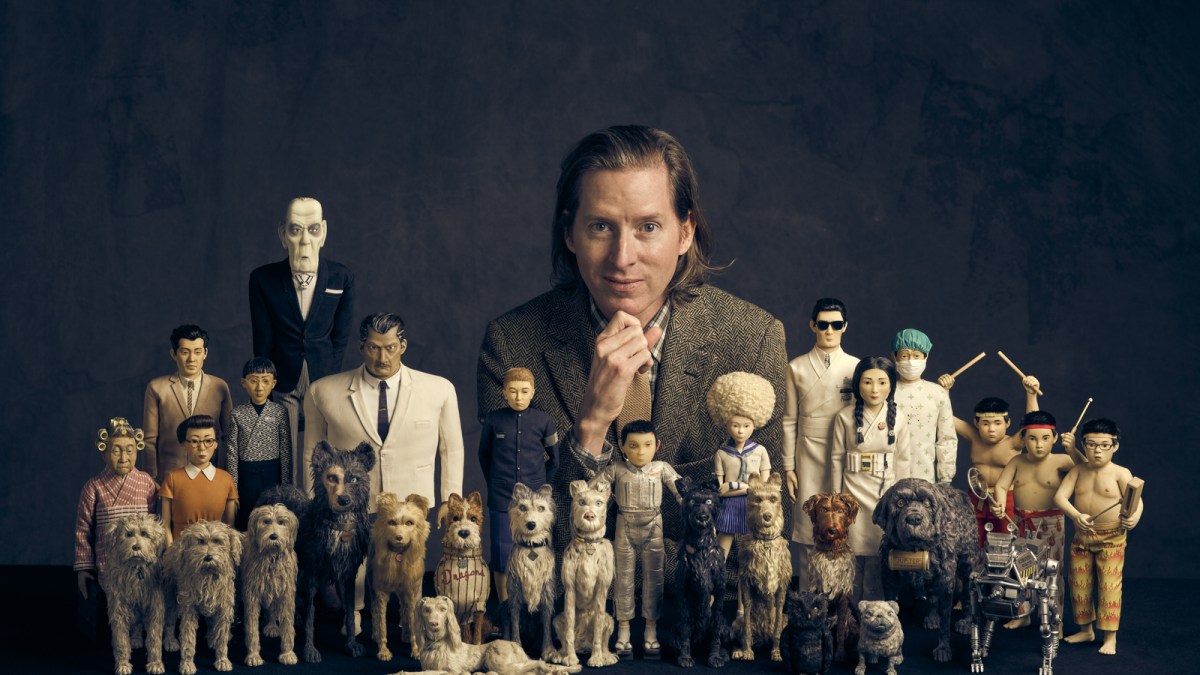Watching a Wes Anderson film is like stepping into a world suspended between nostalgia and make-believe, where symmetry rules and every tassel, teacup, hue and feature appears curated by a poet of precision. And now Anderson’s cinematic universe is leaping from the silver screen to gallery display cases. The film-maker, known for his distinctive visual style and fastidious attention to detail, is presenting an exhibition at the Design Museum in London that encompasses his 30-year career.
The seed for this show was planted over a decade ago, when museums expressed interest in displaying the myriad props from Anderson’s films. “Every now and then, over the past ten years, one museum or another has asked about doing an exhibition of the props and art,” he tells me over voice notes (the typically quirky way the 56-year-old has decided to conduct this interview). “I think it’s largely because we make so much. It’s an unusual quantity of paintings, puppets and original objects you haven’t quite seen elsewhere because of the nature of these movies.”
When the Cinémathèque Française in Paris approached Anderson with the idea, “it seemed like a particularly good opportunity to assemble all of this together”. Featuring more than 500 items of memorabilia, the Paris exhibition opened in March this year and ran for four months, with fans queueing around the block.
• Wes Anderson — every movie ranked
Shortly after Anderson agreed to the Paris show, the involvement of the Design Museum allowed it to grow. “We realised there was a chance to expand it and also show it at a wonderful museum in London. It felt right.”
Following previous Design Museum retrospectives for Stanley Kubrick and Tim Burton, Anderson becomes only the third film-maker to receive the honour. How personal does this feel and do the memories come flooding back? “A little bit,” he admits, “but I stored many of these objects myself. For instance, the puppets from Fantastic Mr Fox could have felt like a startling surprise, but they’ve been in boxes in my New York apartment for years. So whenever kids come over, especially my daughter, the puppets are out being destroyed and they’re quite familiar to me now,” he says laughing. “But looking at some of the Polaroids, there are pictures I don’t even recognise — where I was or when — and I’ve had to puzzle them out. It’s a bit like rediscovering forgotten pieces of your past.”

Gwyneth Paltrow in The Royal Tenenbaums, 2001
ALAMY

Bill Murray in Moonrise Kingdom, 2012
UNIVERSAL STUDIOS
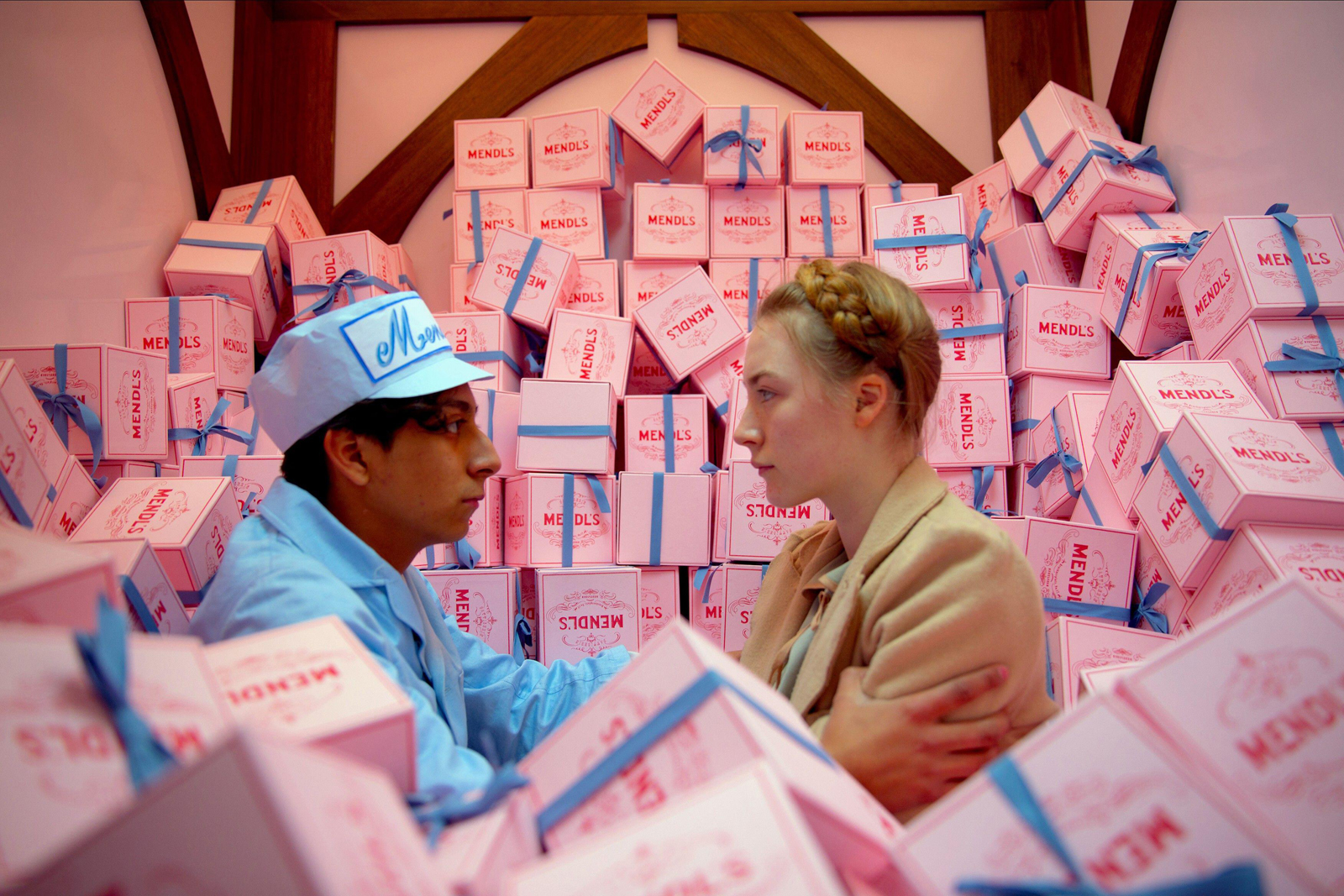
Tony Revolori and Saoirse Ronan in The Grand Budapest Hotel, 2014
ALAMY
The exhibition presents the work of Anderson and his collaborators over the past three decades, showcasing their meticulous craftsmanship and signature visual style. Highlights include notebooks, storyboards, production designs and props, such as the alien and vending machines from Asteroid City, the glorious mural of the candyfloss-pink Grand Budapest Hotel and the Boy with Apple painting that is central to its plot. His animatics — animated storyboards created before the shoot — reveal how fully formed his vision is before filming even begins.
Among the most popular exhibits are some of the now famous costumes: the Fendi fur coat worn over a tennis dress by Margot Tenenbaum (Gwyneth Paltrow), for instance, and the blue uniforms and red beanies of Steve Zissou’s crew from The Life Aquatic. From Rushmore (1998) comes Max Fischer’s school blazer, worn by a 17-year-old Jason Schwartzman in his debut role. Here we see the early signs of Anderson’s fascination with bold colours, particularly the rich red that runs through — in Max’s unitard and Swiss army knife, as well as Bill Murray’s swimming shorts. The shade would later resurface in the Adidas tracksuits of The Royal Tenenbaums, also on display.
• Read more film reviews, guides about what to watch and interviews
“The lining inside Max’s school jacket was bright red and full of these little chambers, signifying all of his clubs, which helped me get into character,” Schwartzman tells me. “I had pockets for almost everything. To this day, if I see someone in a blazer and the inside isn’t red, it doesn’t look right to me.”
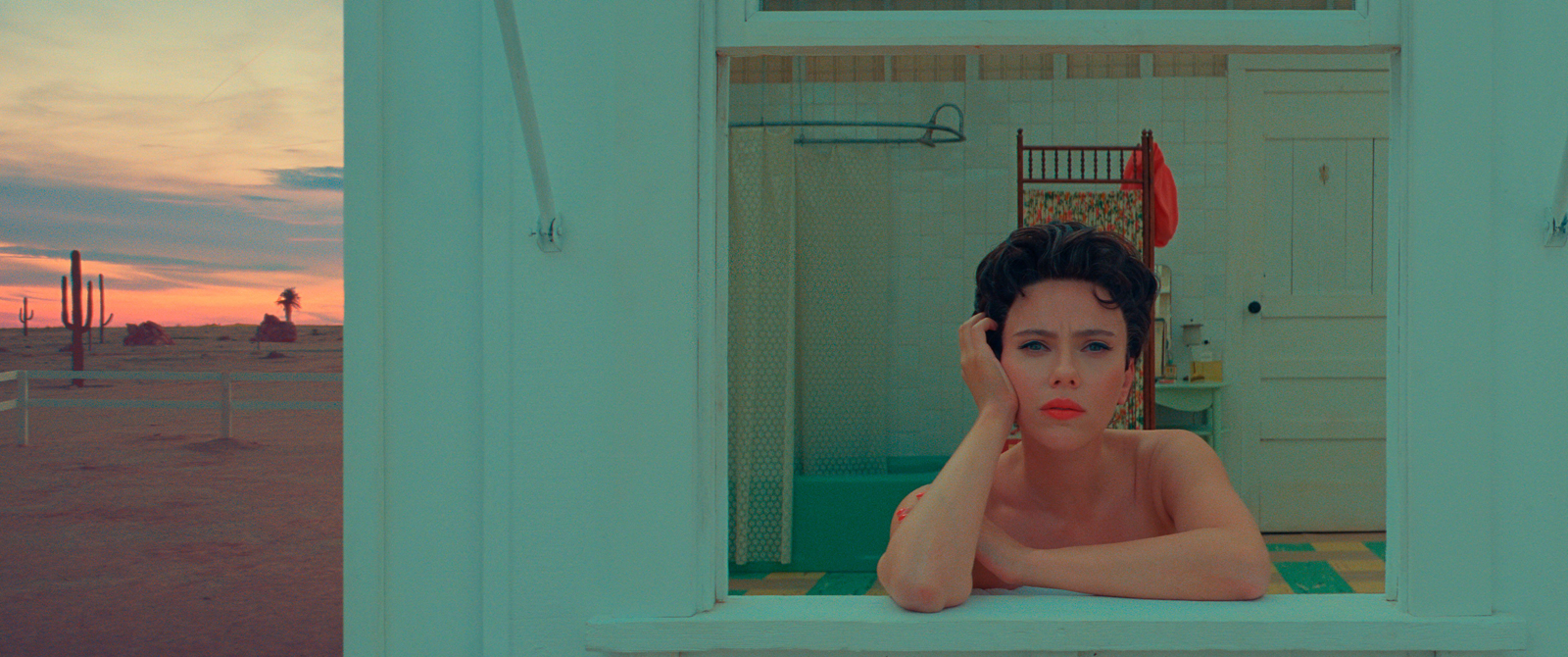
Scarlett Johansson in Asteroid City, 2023
ALAMY

Tilda Swinton and Ralph Fiennes in The Grand Budapest Hotel
ALAMY
One of the exhibition’s triumphs is its scale. The Design Museum’s larger capacity allows for over 200 more items than the Paris show. “We knew we had more space,” Anderson says, “so there are a few big things that we’ve had no opportunity to show before: a scaled-down train from Asteroid City, a large mural painting by Sandro Kopp from The French Dispatch, and even a shark and a submarine from The Life Aquatic.”
Most of these treasures are stored near Anderson’s house in Kent — the Texan also has homes in Paris and New York — a habit formed after losing the props and sets from Bottle Rocket. After the feature wrapped, the studio returned the items to the prop house, which sold them off. Subsequently, since Rushmore, Anderson has ensured that everything from his productions — from faux book covers and annotated scripts to posters on bedroom walls — are clearly catalogued and archived. He sees himself as custodian of the items rather than owner. “I look after everything,” he says. “I just want to make sure that the things people spent so much time and effort on and working so hard to get right are not destroyed.”
Anderson is quick to emphasise that while the exhibition focuses on his films, it also celebrates the talented creatives who built them. “Yes, this exhibition is a display of my work, but it struck me that it’s just as much, and maybe primarily, a display of things made by all these other artists — photographers, painters, illustrators, puppet and prop makers and every variety of craftsperson.”

Anderson on the set of The Phoenician Scheme
ROGER DO MINH/TPS PRODUCTIONS/FOCUS FEATURES ©2025
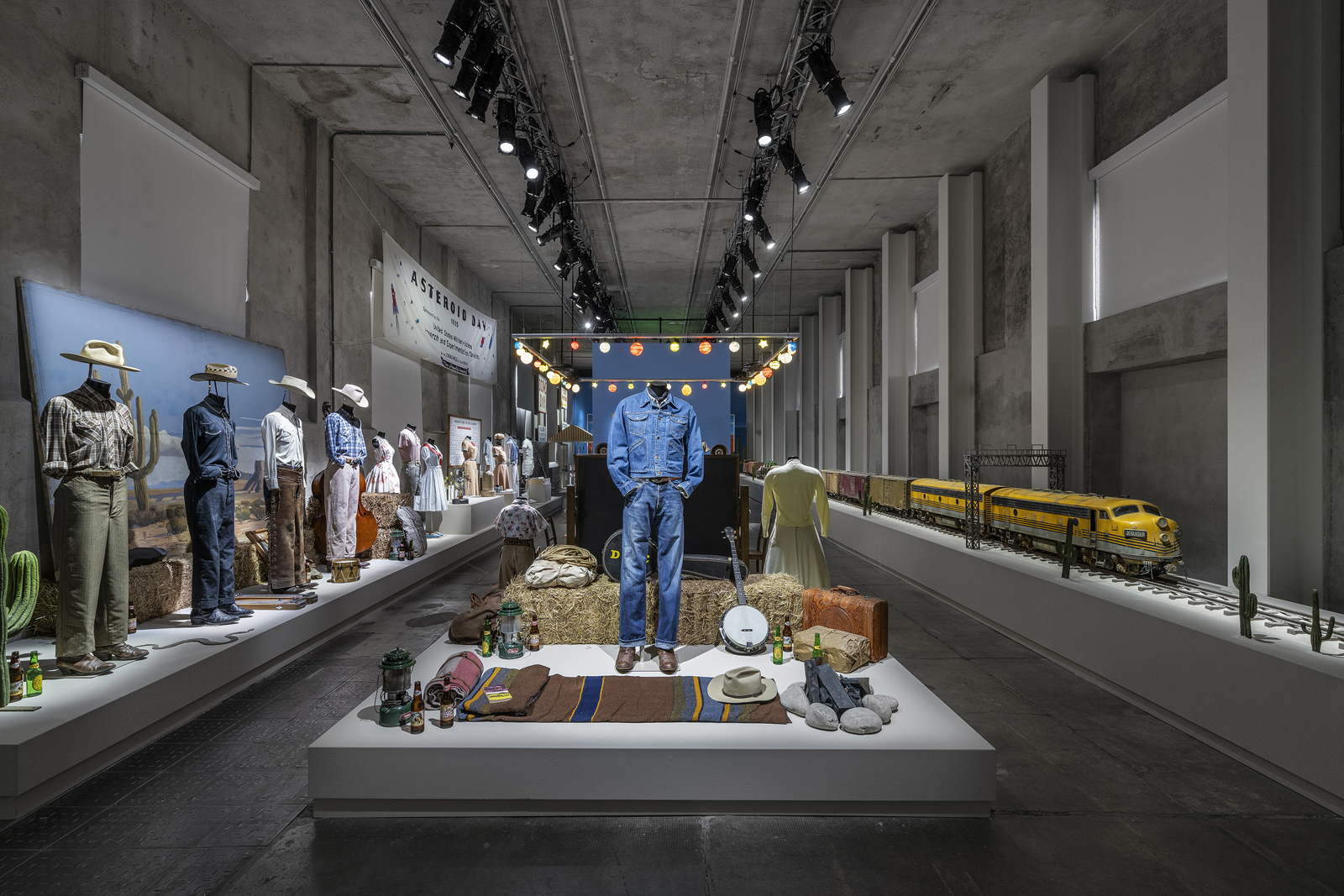
Props and costumes from Asteroid City at the Fondazione Prada, Milan, 2023
DELFINO SISTO LEGNANI
Though renowned for his singular vision, Anderson happily blurs creative roles. Waris Ahluwalia, whom he met at a peace rally outside the UN in New York in 2003, was cast in The Life Aquatic without an audition. “There was generosity in Wes’s approach — he didn’t ask if I could do it, he asked if I would join him and the crew on this adventure,” Ahluwalia says.
• I turned my flat into a Wes Anderson film set
Despite having no experience, Ahluwalia has become part of Anderson’s creative family, not only as an actor, but as a designer, and several of his pieces appear in the exhibition. “For The Darjeeling Limited, Wes asked me to design a pin for my chief steward’s uniform. The elephant felt like the most natural choice — a quiet nod to strength and memory.”
He also designed the knuckle-dusters for Willem Dafoe’s Jopling in The Grand Budapest Hotel. “The assignment was simple but what followed was not,” Ahluwalia says. “When the knuckle-dusters were being transported via train from London to Paris, the gentleman carrying them was stopped at security as they were considered weapons.”
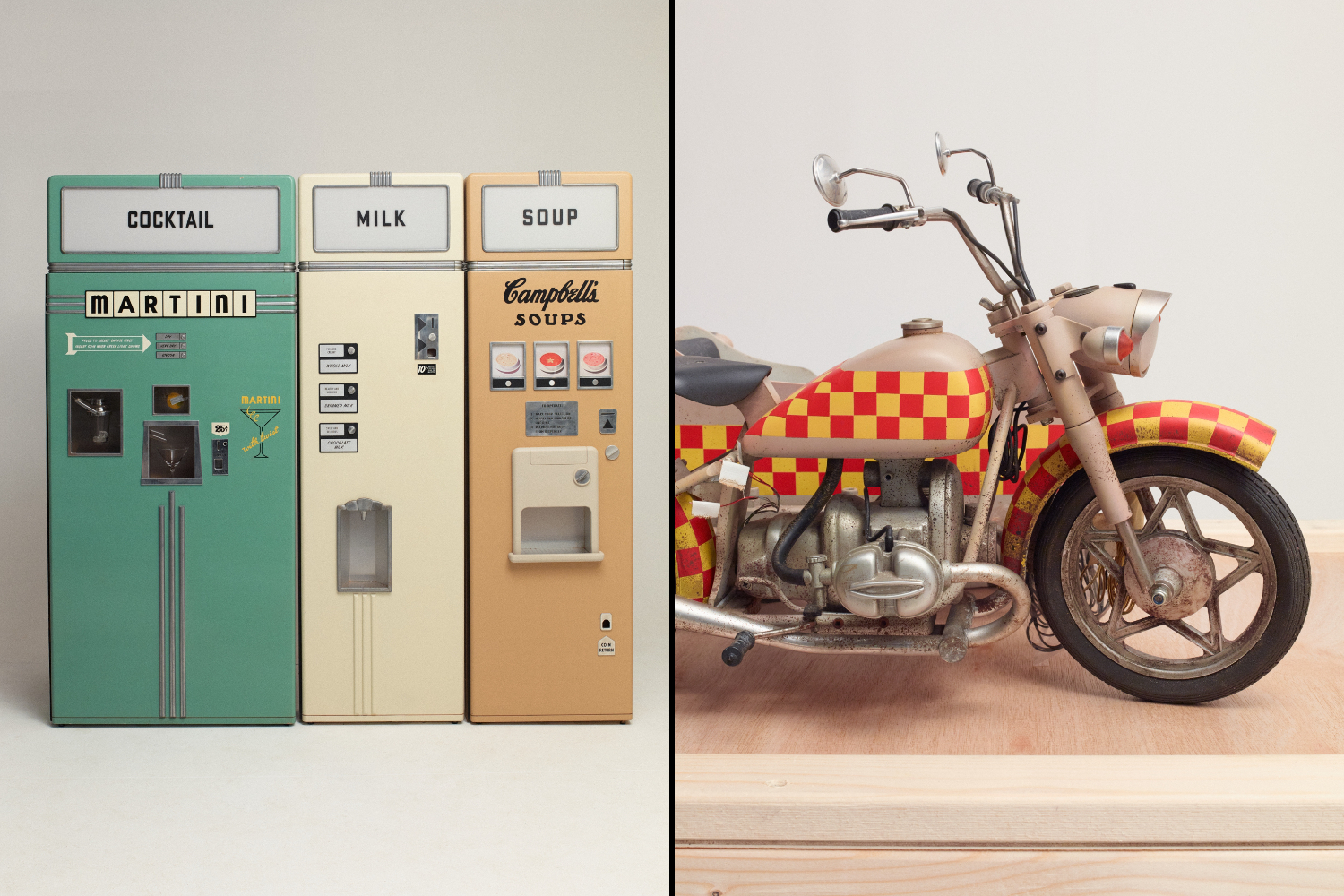
The vending machines from Asteroid City and a miniature model of Mr Fox’s motorcycle from Fantastic Mr Fox
RICHARD ROUND-TURNER
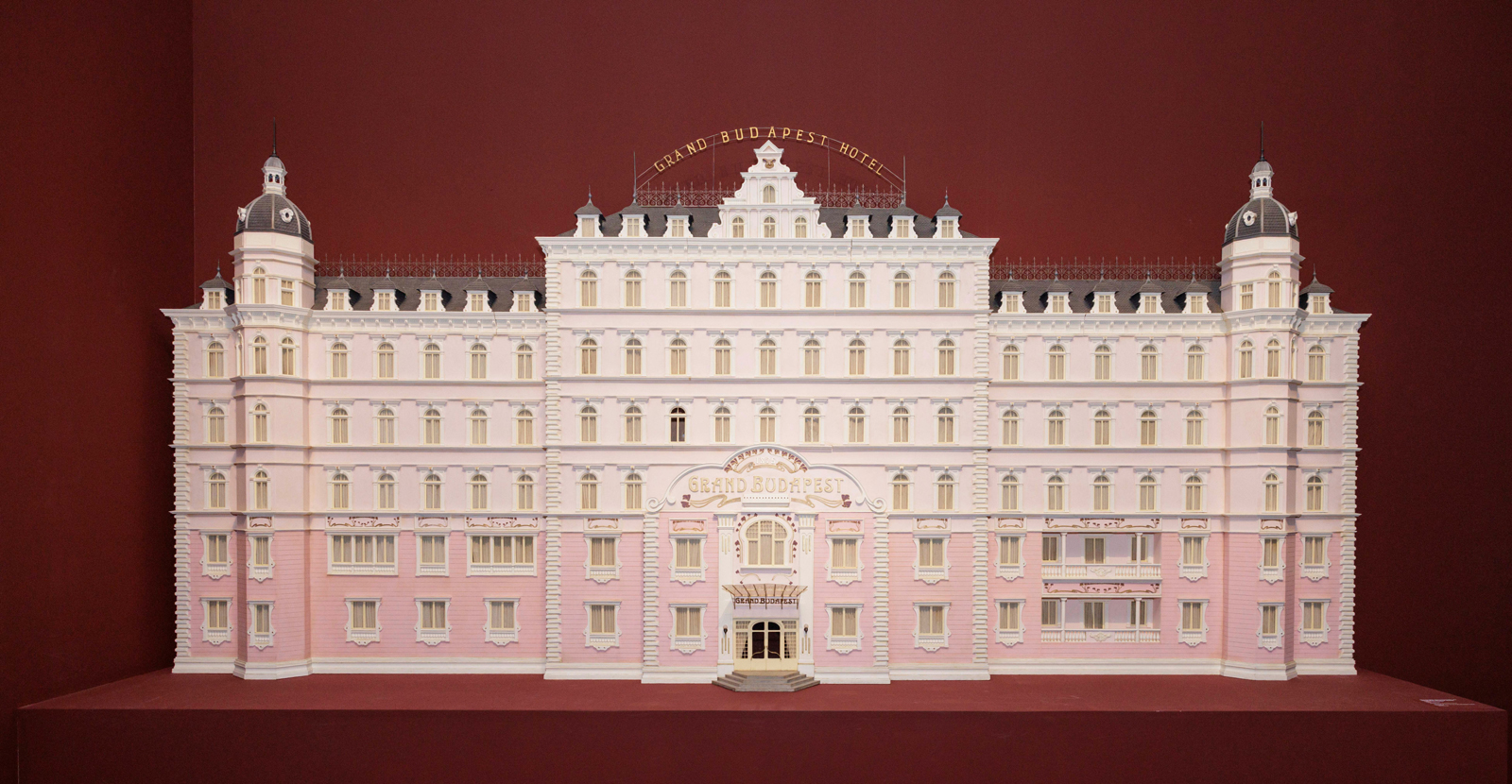
A model of the Grand Budapest Hotel
THIERRY STEFANOPOULOS
• Wes Anderson: ‘Please do not send me memes of people doing me’
More than anything, though, as the bright red blazer lining in Rushmore shows, Anderson’s films are instantly recognisable for their idiosyncratic colour palettes — each film defined by its own chromatic logic. With Fantastic Mr Fox, Anderson explains, “We just made a chart. If it’s not on this chart, it can’t be in the movie. There’s basically nothing blue in the whole film.”
Wes Anderson: The Archives is at the Design Museum, London, from Friday, November 21 until July 26, 2026 (designmuseum.org)

